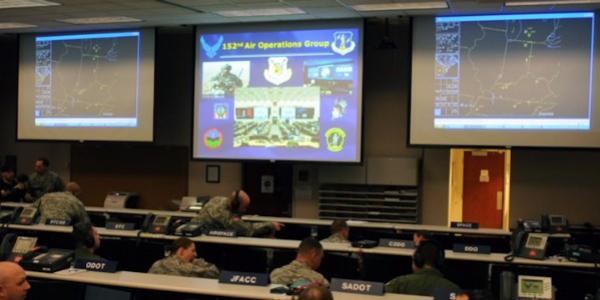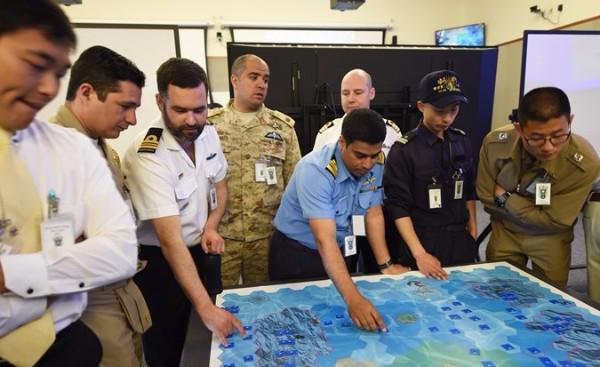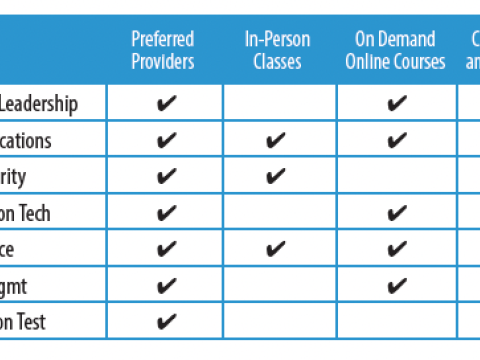It’s Game Time (Again) For War Gaming
War gaming across the U.S. Defense Department has been wasting away over the past few years, atrophied because of rapid technological changes and constrained defense spending, department officials say.
Still, the same force that once relied on the inexpensive yet highly effective tool can resurrect it, which Deputy Defense Secretary Bob Work hopes will take place. “Successfully navigating through this complex and dynamic competitive environment will once again require us to push the boundaries of technology while ensuring that innovation remains rooted in operationally realistic doctrine and capabilities,” reads a position paper penned by Work and Gen. Paul Selva, USAF, vice chairman of the Joint Chiefs of Staff. It was published on the website War on the Rocks, a platform for analysis, commentary, debate and multimedia content on foreign policy and national security issues.
“Few historical periods match the dynamic technological disruption of the interwar years of the 1920s and 1930s,” the two wrote. “During these decades, militaries the world over struggled to adapt to new inventions such as radar and sonar as well as rapid improvements in wireless communications, mechanization, aviation, aircraft carriers, submarines and a host of other militarily relevant technologies. Military planners and theorists intuitively understood that all these new technologies, systems and advances would drive new ways of fighting, but they were forced to envision what future battlefields would look like with few clues to go by.”
History repeats.
The Defense Department has embarked on its third offset strategy, which stresses innovation to maintain a technological advantage over adversaries. War gaming is an integral part of the endeavor. “When done right, war games spur innovation and provide a mechanism for addressing emerging challenges, exploiting new technologies and shaping the future security environment,” Work wrote in a memo distributed to top military leaders. His marching orders, issued in February 2015, served as the catalyst for a new elective course at the National Defense University (NDU), an institution funded by the Defense Department to facilitate high-level training, education and the development of national security strategy.
The recent attention bestowed by leaders from the top echelons of the Defense Department provides a “shot in the arm for the war-gaming community,” says Timothy Wilkie, NDU research associate. “[Work’s memo] raised the profile and got a lot of interest in the tool,” he says. “It’s a tool that has been traditionally underused and one that is now being utilized a lot more often. What you’ll find around the [Defense Department] is that war gamers are very busy.”
NDU’s nascent 12-week course exposes graduate U.S. and international students to an upper-level understanding of how critical and strategic thinking can be applied to any number of scenarios, from traditional combat missions to counterinsurgency, humanitarian aid or disaster relief operations, Wilkie says.
“We are leveraging the perspective of the joint professional military education aspect in shaping the critical-thinking skills of the leaders of the future,” adds Capt. Angie Walker, USN, director of NDU’s Center for Applied Strategic Learning (CASL) Wargaming Center.
Established in 1984, what was then called the War Gaming and Simulation Center was created to design and deliver experiential events associated with the five colleges across NDU. Following the terrorist attacks of September 11, 2001, its name changed and mission broadened to provide national strategic-level exercises across the Defense Department. The last transformation in 2007 aimed to ensure that the NDU student experience complied with the Officer Professional Military Education Policy requirements for exercises and took advantage of the experiential learning techniques associated with adult learners.“We are a post-9/11 creation and now a combination of graduate-level education for national security professionals and for international counterterrorism practitioners,” says Michael Bell, chancellor of NDU’s College of International Security Affairs. “The challenge with both groups is that the kind of traditional approach to education, or the kind of tried-and-true class setting, may still not be appropriate for the threats they face, the situations they are in and the challenges they have to go through.”
The university attracts a nontraditional student whose average age is 43. Already it has seen graduates from 92 countries, 16 U.S. government agencies and each of the military services, Bell says.
The overall curriculum that includes this year’s war-gaming elective is an 11-month program—compressed from what ideally should be 18 months—in which faculty present students with pressing dynamic problems they attempt to solve, Bell offers. “As the threat fundamentally evolves, how do we even understand the challenge of terrorism, violent extremism, insurgency, organized crime, narcotics trafficking—all of those challenges?” he asks.
War gaming could help produce the answers. It offers “the squishy side, the personal perspective” to strategic planning that is not always embraced by military brass, Capt. Walker shares. Because a war game does not always net the same repeatable results, it is often difficult for some to accept the practice as a tangible solution to teaching young leaders strategic approaches. But war gaming had a prominent place in history and is making a comeback. “It takes into account human characteristics, and I would argue that that’s the strength of war gaming,” she adds.
This is why officials included a charge to pursue war gaming again as an integral part of the department’s third offset strategy, addressed in the Defense Innovation Initiative announced by then-Defense Secretary Chuck Hagel in 2014. The endeavor seeks operational and organizational constructs that are enabled by new technology, not solely driven by it. And acquiring the latest and greatest high-technology solutions is not the primary driver of efforts at NDU. “We don’t necessarily need high technology to” devise strategic war-game plans, Capt. Walker says.
Yet the third offset could be an opportunity to take war gaming to the next level, she emphasizes. Officials are well aware that the curriculum will need to address the needs of future students, who are digital natives. The morphing expectations of these students present faculty with a bit of a struggle to stay relevant and effective, they say. As university classrooms become filled with these digital natives, expectations and requirements for leveraging technology at work, at home and at school are changing. “We are adapting to meet those changing needs,” Capt. Walker says.
Although war gaming is relatively inexpensive—sometimes all that is needed is a table for students to talk out a problem—recent budget cuts at NDU still sting. University faculty and students are focused on innovation to challenge the status quo and set the course for the future, Chancellor Bell offers. “What is the stakeholder’s need?” he asks. “It’s developing strategic leaders. What we do now may be adequate. But if you think about it ... the character and conduct of war really changed from 9/11 to today. How will it change in 15 more years?”






Comments